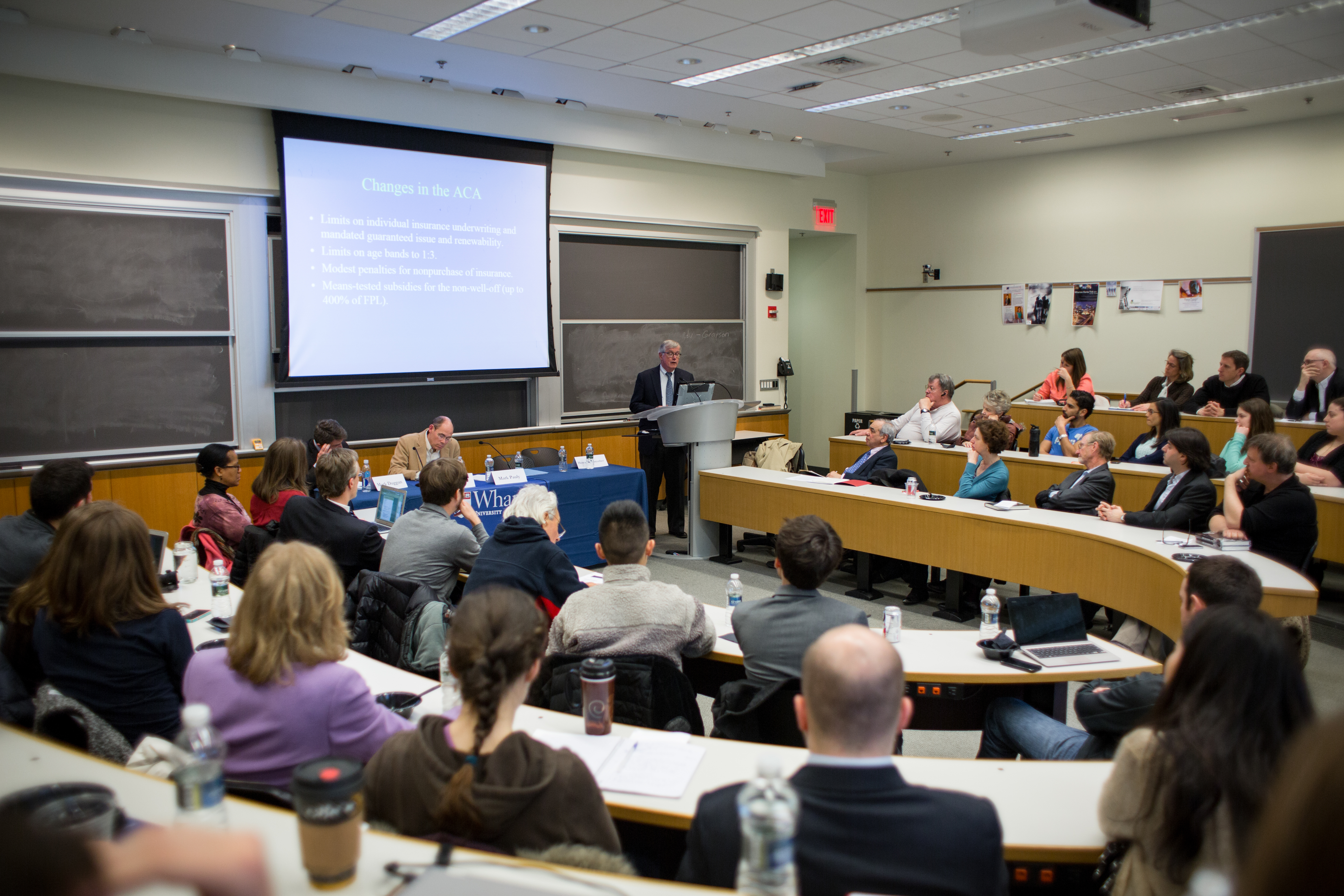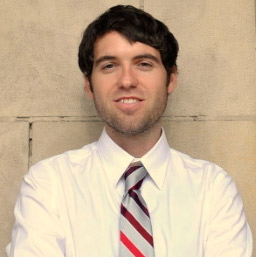
Panel of Penn experts share latest research on the Affordable Care Act’s implementation.
Most Americans are aware of the difficulties last year with the initial rollout of HealthCare.gov, the registration website for individuals seeking insurance coverage under the Affordable Care Act (ACA). Yet these website woes, it turns out, were just the tip of the iceberg in ACA’s implementation.
To help assess how well Obamacare is working, a recent panel discussion at the Wharton School of Business at the University of Pennsylvania brought together leading experts from across the University.
Starting off the panel, Tom Baker, the William Maul Measey Professor of Law and Health Sciences at the University of Pennsylvania Law School, presented his research on state implementation of the ACA’s access-expanding reforms and insurance regulation. Baker’s project – which he calls HIX 2.0 – aims to track how well states are implementing the ACA. HIX 2.0 seeks answers to questions about what state characteristics are associated with certain implementation choices, such as the decision to opt out of the Medicaid expansion under the ACA, as well as what choices are associated with success on critical policy goals under the ACA, such as percentage of enrollment from among the eligible population.

Baker shared some of his initial research showing that a rise in a state’s multi-factor “implementation score” is positively correlated with achievements in enrollment, suggesting that better efforts to comply with the law are associated with greater gains in closing the coverage gap.
Mark Pauly, the Bendheim Professor of Health Care Management at the Wharton School, turned to the operation of the insurance reforms mandated by the ACA. He noted that the federal U.S. Department of Health and Human Services has issued regulations under the ACA that, among other things, establish “community rating” as an organizing principle in insurance pools. While lauding the fact that the ACA attempts to “means test” insurance availability by providing subsidies for the poor and near poor, Pauly worried about some of the potential perverse effects of community rating: namely, it requires young, healthy people in effect to subsidize low-income, high-risk people in insurance pools, thereby discouraging young people from signing up for coverage.
 According to Pauly, community rating poses a real threat to the realization of the ACA’s goals of near-universal enrollment and a decrease in health care costs because this kind of rating system alters the incentives to sign up. It remains to be seen whether the individual mandate will be able to overcome these incentives not to sign up or whether many individuals will simply take the penalty for not signing up for coverage.
According to Pauly, community rating poses a real threat to the realization of the ACA’s goals of near-universal enrollment and a decrease in health care costs because this kind of rating system alters the incentives to sign up. It remains to be seen whether the individual mandate will be able to overcome these incentives not to sign up or whether many individuals will simply take the penalty for not signing up for coverage.
Finally, Mark Duggan, the Rowan Family Foundation Professor of Business Economics and Public Policy at the Wharton School, evaluated the ACA’s broader economic effects. He highlighted a number of ways that the ACA could theoretically have a major impact on production and employment. For instance, on the positive side, the health insurance exchanges could reduce “job lock” – that is, the tendency of people to pass up better employment opportunities or entrepreneurial activities because of a dependence on employer-provided health insurance. The law could also slow growth in health care costs and lower the deficit.
On the other hand, the law could also discourage work at “subsidy cliffs” by effectively working as a tax on higher wages, as workers with higher income will have to give up more and more of the subsidy for purchasing health insurance that the law provides. The so-called “employer mandate” thresholds could also discourage firms from expanding.
 While much of the evidence is still emerging, Duggan argued that there is some evidence that job lock is decreasing (although there is also no evidence that this had any effect at all on the otherwise stable but high unemployment rate). In addition, there is some indication that health care costs are decreasing. For instance, public health care spending as a percent of GDP fell from 7.9 to 7.8 in just a short period of time after the law was passed, suggesting some gains in a spending category that threatened to envelop the entire budget before the passage of the law. Of course, the effects on spending in the private insurance market are less well known.
While much of the evidence is still emerging, Duggan argued that there is some evidence that job lock is decreasing (although there is also no evidence that this had any effect at all on the otherwise stable but high unemployment rate). In addition, there is some indication that health care costs are decreasing. For instance, public health care spending as a percent of GDP fell from 7.9 to 7.8 in just a short period of time after the law was passed, suggesting some gains in a spending category that threatened to envelop the entire budget before the passage of the law. Of course, the effects on spending in the private insurance market are less well known.
Duggan ultimately concluded that, because the ACA is complicated and provides incentives for individuals and companies that often point in very different directions, we likely will not understand the full impact of the ACA on the economy for some time to come.
 Kicking off the question-and-answer session following the panel members’ presentations, the panel’s moderator, Howard Kunreuther, the James G. Dinan Professor at Wharton and Co-Director of its Risk Management and Decision Processes Center, asked what one aspect of the law the panel members would change. Pauly said the employer mandate, while Baker and Duggan thought that the U.S. Supreme Court’s opinion authorizing states to opt out of key parts of the law’s implementation created unhelpful complications.
Kicking off the question-and-answer session following the panel members’ presentations, the panel’s moderator, Howard Kunreuther, the James G. Dinan Professor at Wharton and Co-Director of its Risk Management and Decision Processes Center, asked what one aspect of the law the panel members would change. Pauly said the employer mandate, while Baker and Duggan thought that the U.S. Supreme Court’s opinion authorizing states to opt out of key parts of the law’s implementation created unhelpful complications.
The panel discussion, held on the occasion of the ACA’s four-year anniversary, was part of the Risk Regulation Seminar Series sponsored by the Penn Program on Regulation, the Wharton Risk Management and Decision Processes Center, and the Initiative for Global Environmental Leadership.




